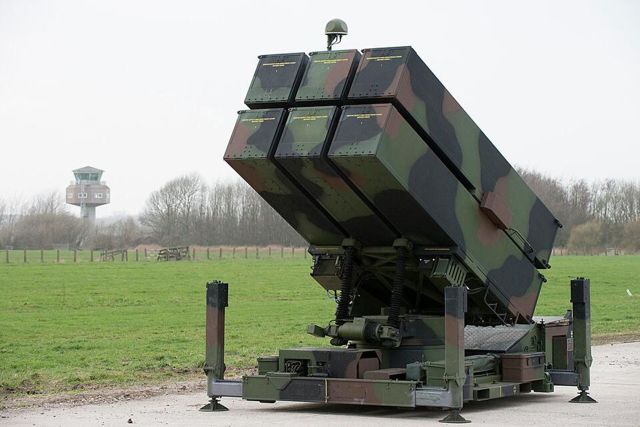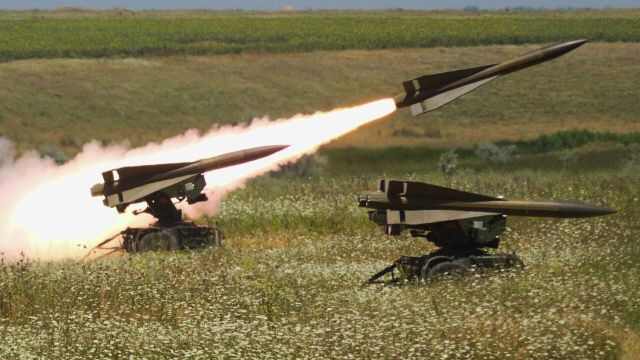MOSCOW, Nov 1 — RIA Novosti, Andrey Kotz. Washington has promised Kiev protection from constant shelling of infrastructure and is increasing the supply of anti-missile systems. However, not such as the Ukrainian authorities want.
Urgent delivery
According to Reuters, the White House is going to send MIM-23 HAWK anti-aircraft missile systems to Ukraine to fight Russian "Calibers" and kamikaze drones. Journalists claim that the Biden administration will use the Presidential Drawdown Authority (PDA) mechanism, which allows for the rapid transfer of weapons from army stocks to another state without congressional approval.
It is not yet known exactly how many units of the air defense system Ukraine will receive. They didn't comment on it officially. It is possible that allies will also join in. Such complexes in various modifications are in the arsenals of at least a dozen European countries.
Everything has been decommissioned for a long time, but it is quite possible that the White House will ask to open the vaults.
NATO countries decided to invest in Ukrainian air defense after massive Russian strikes on critical infrastructure in mid-October. Following the meeting in the Ramstein-4 format, the defense ministers of the alliance countries announced new supplies. The UK promised missiles for NASAMS, France — Crotale complexes, Spain - four units of the same MIM-23 HAWK.

Pedestrian bridge in the center of Kiev, damaged by an explosion Image Source: © AP Photo / Efrem Lukatsky
"Not enough for protection"
Analysts note that neither the Americans nor the Europeans are in a hurry to transfer advanced systems to Kiev en masse. Several NASAMS and IRIS-T batteries are clearly not enough to reliably cover critical infrastructure.
The West has repeatedly expressed fears that weapons may fall into the "wrong hands" — to the Russians. And if the novelties do not prove themselves in a real battle in the best way, it will spoil the reputation on the international market.
"Two NASAMS with skillful handling will be enough to protect a maximum of two important infrastructure facilities or one large one — for example, Kiev," says military expert Alexey Leonkov. — Each NASAMS can work in an automated command line, receiving data on the air situation from American intelligence facilities. Piece deliveries allow the West to test this technique in real combat conditions."
According to Leonkov, NATO countries use all the information to build their own air defense system-missile defense. We are talking about tests, so the supplies are metered.

NASAMS mobile anti-aircraft missile system Image source: CC0 / Ministerie van Defensie /
Questionable effectiveness
But Kiev's allies share outdated samples almost without a hitch. The MIM-23 HAWK is one of those. The Raytheon company's medium-range anti-aircraft missile system was adopted in the United States back in 1960.
Since then, they have been upgraded several times, modified to intercept missiles. In the 1990s, modern radars for detecting, tracking and highlighting targets were added, a new warhead for missiles, and increased resistance to electronic warfare.
"Hawk" is one of the most belligerent complexes. He made his debut in the Six-Day War of 1967, although not very successfully — there were frequent misses and "friendly fire" on his fighters. By the Yom Kippur War (1973), the shortcomings were taken into account: then Israeli troops shot down 17 Arab planes and helicopters.
The most massive version of the I-HAWK (Improved HAWK) is capable of hitting targets at ranges from one and a half to 35 kilometers and at altitudes from 60 to 18 thousand meters. In terms of tactical and technical characteristics, the Soviet S-125 "Neva" and 2K12 "Cube" /"Square", which have long been removed from the Russian army, are the closest.
For several decades, the complex has shown itself in dozens of conflicts around the world. However, by the XXI century, his time was gone. The US army sent the last samples to the warehouse in 2002, replacing them with portable line-of-sight air defense systems with infrared guidance FIM-92 Stinger.

Marines with FIM-92 Stinger MANPADS. 1984 Image Source: © Photo : SSGT Danny Perez, U.S. Air Force
Problems with quantity
It is not known in what condition these SAMs are after long—term conservation. In addition, it is unclear whether Western industry is capable of resuming mass production.
Germany has already faced such a problem. Berlin, as it became known to the media, cannot produce the right amount of ammunition for the Gepard self-propelled guns transferred to Ukraine in the summer. The Bundeswehr decommissioned these self-propelled guns in 2010 and is now asking Switzerland to help, where the necessary shells are produced.
The fate of other obsolete gifts to Kiev is also vague. For example, the French Crotale air defense systems. There are no reports of their effectiveness at the front. The complex was adopted in 1971. The latest modification of the Crotale Mk.3 during tests in 2008, she intercepted two drones at altitudes of 500 and 970 meters. The effectiveness at low altitudes, "working" for Russian precision weapons, is unknown.
The West continues to supply Ukraine with outdated military equipment. Although he promises "comprehensive support" in words.

